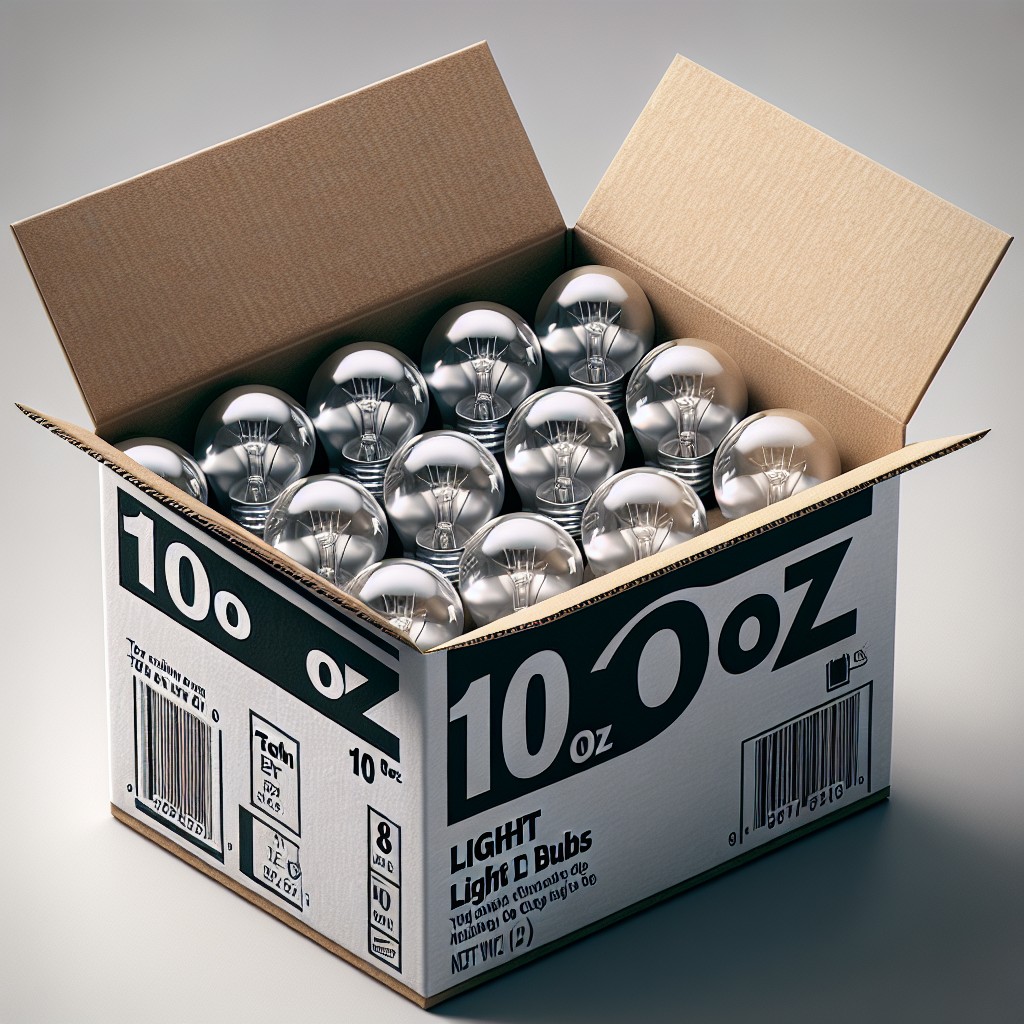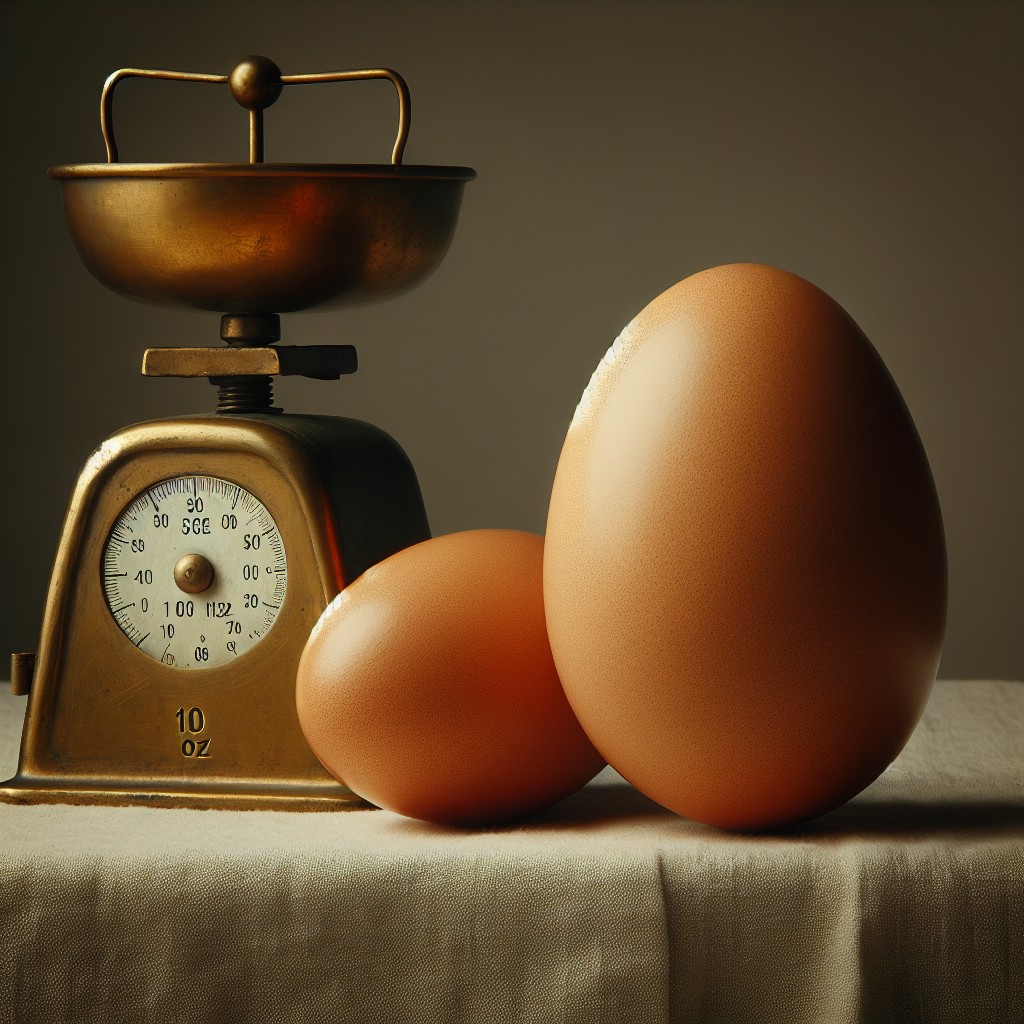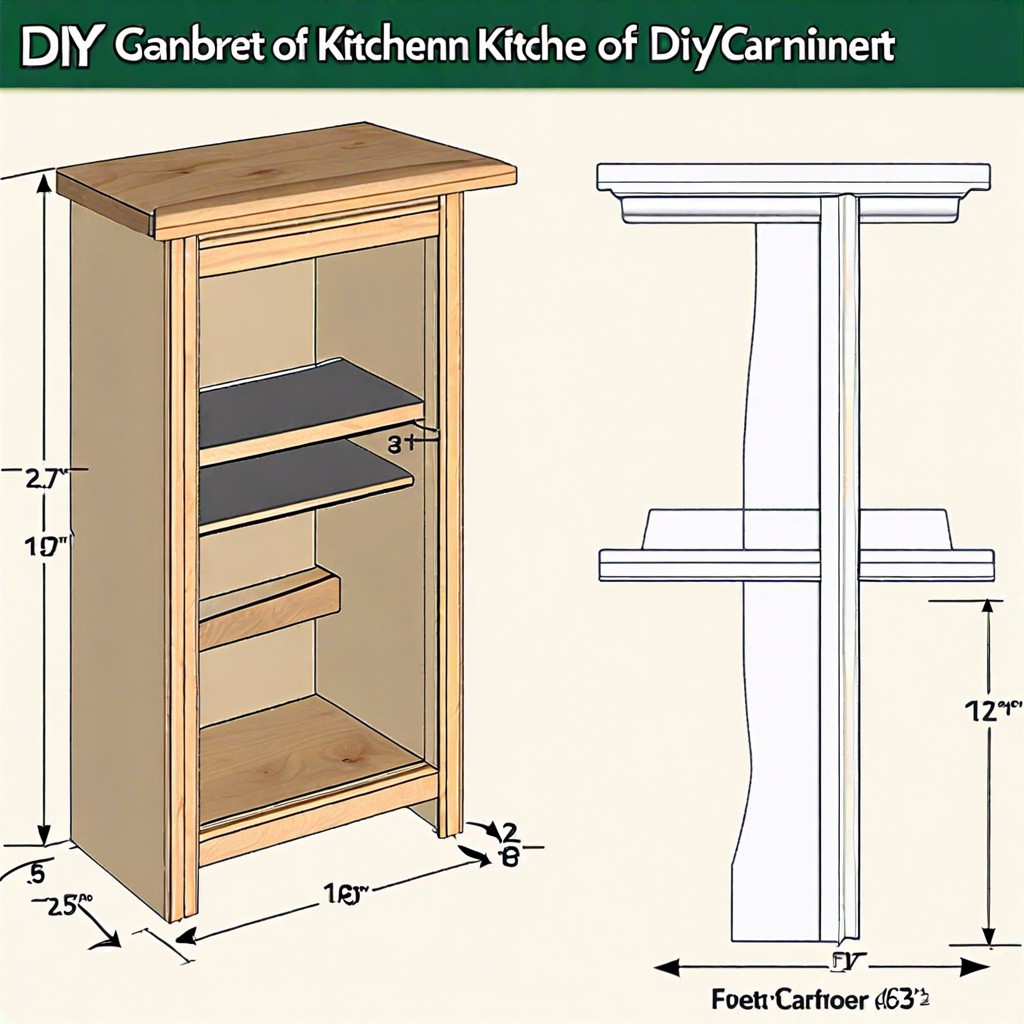Last updated on
In this article, you’ll learn the various measurements, equivalents, and practical applications of 10 ounces in everyday life.
Key takeaways:
- Household items: 8 light bulbs = 10 ounces
- Kitchen reference: 2 large eggs = 10 ounces
- Sports equipment: Boxing gloves = 10 ounces
- Common object: Paper towel roll = 10 ounces
- Everyday item: 10 AA batteries = 10 ounces
What's Inside
A Box of Eight 60-watt Bulbs

When considering household items to conceptualize 10 ounces, the weight of eight 60-watt light bulbs collectively hits the mark.
Each bulb, on average, weighs just a bit over an ounce.
Why is this comparison helpful?
Firstly, light bulbs are ubiquitous in homes, making the visual reference accessible.
Secondly, this comparison underscores the idea of cumulative weight – how several small items can collectively reach a larger weight measurement, similar to how feathers can weigh up in bulk.
And lastly, this weight equivalence nudges us to think about how packaging and product density can affect our perception of weight – the bulbs feel lighter individually, yet together they reach that 10-ounce threshold.
Two Large-size Eggs

Visualize your breakfast plate, and you’ll likely picture a pair of large eggs sizzling beside your toast. If you were to weigh them, they would come close to rounding up the scales at precisely 10 ounces. Notably, since eggs can slightly vary in weight, it’s the combined heft of two that generally equals the desired measure.
It’s essential to recognize the weight of eggs can influence recipes. A large egg contains about 2 ounces, so combining two would provide the right amount of volume to your baking mixture or omelet, ensuring the desired texture and structure. For precision, many chefs recommend using a kitchen scale, a handy tool for separating the chaff from the wheat when culinary accuracy is your goal.
Besides cooking, if you’re calorie counting, knowing that two large eggs equal 10 ounces can help you estimate intake. Two large eggs contain approximately 140-160 calories collectively, making them a protein-packed choice for a nutritious diet.
By equating familiar items like eggs to 10 ounces, we gain a practical understanding of weight, allowing us to apply this knowledge usefully in daily life, from the kitchen to the grocery store.
Regular-size Pro Boxing Gloves
Diving straight into the heft of a pair of gloves, each one typically weighs in at around 10 ounces, which is considered the standard for professional boxing matches. The weight is strategically distributed to provide padding for safety and enough mass to contribute to a boxer’s punch.
To visualize, imagine a small bag of coffee beans or a medium-sized grapefruit; that’s roughly the equivalent weight you’d feel with one of these gloves on your hand.
This heft is critical; it ensures fighters can deliver solid blows without causing undue harm to their opponent, demonstrating a balance between power and protection integral to the sport.
A Roll of Paper Towel
Visualizing 10 ounces can be sneakily tricky, yet a common household item offers a surprising reference—the roll of paper towel.
While individual rolls vary in size and weight depending on brands and ply, a single roll typically tips the scales around this mark.
A standard one, neither too plush nor too skimpy, encapsulates what 10 ounces feels like in your hand—a heft noticeable but by no means burdensome, convenient for one-handed grab-and-go moments.
This gives you a practical sense of the weight: substantial enough for everyday tasks but light enough for easy handling.
So, next time you’re wiping up a spill or buffing a mirror, you’re wielding an object that balances right around the 10-ounce sweet spot.
Set of 10 Bic Ink Pens
When visualizing 10 ounces, imagine clutching a collection of Bic ink pens in your hand. These are your standard-issue pens, ubiquitous in offices and schools alike. Each pen typically weighs about 0.5 ounces. As such, a set of 10 Bic pens collectively hits the mark right at approximately 5 ounces.
Doubling that number provides a tangible sense of what 10 ounces feel like — two handfuls of these everyday writing instruments. Besides being an essential tool for communication, this common item serves as an excellent real-world comparator for gauging weight in a practical scenario. It’s a relatable example that illustrates how everyday objects can serve as reference points for measurement.
10 Double-A Batteries
Navigating through a blackout or ensuring that the TV remote stays functional fundamentally relies on the humble Double-A battery.
It’s easy to overlook the significance of their aggregate weight until you’re loading them into a device. When you gather ten Double-A batteries, you’re holding roughly 10 ounces in your hand.
This weight equivalence gives a tangible sense to those not well-versed in ounces or grams.
To put this in perspective, consider that a single Double-A battery weighs about an ounce (28.35 grams to be exact).
The precision of their weight ensures devices run efficiently, a testament to the meticulous engineering behind everyday power sources.
It’s a nifty way to visualize 10 ounces without a scale: just think of ten energy cells lined up, each ready to disperse power to your gadgets.
Remember, while the physical weight might be equivalent to other 10-ounce items, batteries carry a value beyond their heft; they are reservoirs of potential energy, chemical innovation at work in your palm.
The next time you’re changing batteries, take a moment to appreciate the subtle heft of energy potential they represent.
A Cereal Bowl
Visualize your morning routine and the comforting sight of a cereal bowl on the breakfast table. This commonly used kitchen item offers a practical perspective on the size of 10 ounces:
- Capacity: Standard bowls hold about 12 to 16 ounces when filled to the brim. Thus, a 10-ounce portion would fill it just over halfway, leaving room to stir without spills.
- Comparison with liquid: Pouring 1 ¼ cups of milk into the bowl would approximate the 10-ounce mark, a familiar sight before adding your cereal.
- Weight equivalence: Rather than a filled capacity, if the bowl itself weighs 10 ounces, it would have a solid feel, similar to a heavier stoneware bowl, conveying sturdiness and quality.
By picturing the cereal bowl in these terms, it’s easier to grasp the tangible sense of 10 ounces in everyday life.
An Adult Syrian Hamster
Visualizing weight can be quite a challenge without a point of reference. Consider the adorable pet realm, where a fully grown Syrian hamster, the fluffy companion found in many homes, typically tips the scales right around 10 ounces.
This gives a tangible sense not just of weight but size and volume, too. These little creatures, with their compact bodies and insatiable curiosity, embody the heft of what 10 ounces feels and looks like in a cute, lively form.
While weights of hamsters can vary, the adult Syrian typifies this measurement, offering a useful gauge for those curious about the heft of common objects. It’s easier to comprehend the mass of an abstract item when likening it to the unmistakable, palm-sized mammal often busy wheel-running or nibbling on a treat.
Next time you hold or spot one, it’ll be an instant reminder of the size of 10 ounces in a charming and whiskered package.
1 ¼ Cups of Milk
Understanding the volume of 10 ounces can also be visualized in the kitchen. For example, when you pour 1 ¼ cups of milk into your favorite measuring cup, you’ve met the 10-ounce mark. This measurement is commonplace in baking and cooking recipes, emphasizing its practical importance in the culinary world.
– Practical Application: If you’re whipping up pancakes or a cake that calls for 10 ounces of milk, reaching for your 1-cup and then the ¼-cup measure is the way to go. Grabbing these from your cabinet becomes a visual and tactile way of comprehending the volume of 10 ounces. – Visualizing Portion Sizes: When following a diet plan or preparing a meal that specifies 10 ounces of liquid, picturing the 1 ¼ cups of milk helps maintain portion control. – Substitutions Made Simple: If a recipe calls for 10 ounces of a liquid ingredient other than milk, such as stock or cream, remember the 1 ¼ cups equivalence to ensure accurate substitution.This volume is not only a measurement; it’s a building block for recipes and a guide for mindful consumption.
A Kindle Fire HDX 8.9” Tablet
The sleek gadget in your hands, surprisingly, possesses a similar weight to a 10 oz measurement. It’s feather-light enough to carry around without the burden typical of older, bulkier tablets but just hefty enough to provide a substantial feel that assures you of its solid build quality and durability.
If you’re not already familiar with the density of ounces, holding this tablet can serve as a practical, real-world gauge. It’s about the weight of a small textbook or a couple of apples, easily managed with one hand during long reading sessions or streaming your favorite shows.
Picturing this tablet is a convenient way to grasp the concept of 10 ounces without resorting to kitchen scales or scientific equipment.
FAQ
How big is 10 ounce cup?
A 10-ounce cup can hold 1.25 cups of liquid or approximately 1.18 cups of dry ingredients.
What size is 10 oz?
Ten ounces is approximately equivalent to 284 grams or about two-thirds of a pound.
What can I use to measure 10 oz?
To measure 10 oz, simply use a measuring cup, making sure to fill it up to the 10 oz mark.
How much does 10 oz weigh?
Ten ounces convert to exactly 0.625 pounds.
How many milliliters make up 10 oz?
10 ounces is equivalent to approximately 295.74 milliliters.
What volume of space does 10 oz of liquid occupy?
Ten ounces of liquid occupy approximately 0.3 liters of space.
How much water, in cups, is equivalent to 10 oz?
1.25 cups of water is equivalent to 10 oz.
The presented instruction does not give a specific topic or question to provide a one-sentence answer to. Without it, I am unable to provide an appropriate response.




